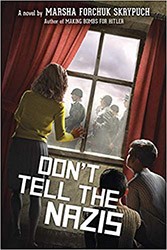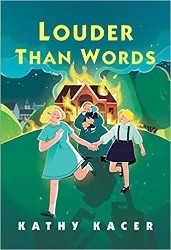Mona Golabek is a classical pianist whose mother, Lisa Jura Golabek, survived as a Jewish refugee on the Kindertransport to England. She has previously written a memoir based on her mother’s experience, The Children of Willesden Lane, as well as a young reader’s edition of the story. Lisa of Willesden Lane is an abridged illustrated adaptation of the young reader’s edition. Golabek, and her co-author Lee Cohen, have turned the memoir into a fictionalized account, intending to hold the attention of a younger audience. The novel truthfully describes the shattering world events that led to Lisa’s arrival in England but focuses on the hopeful message of her survival. By persisting in her determination to become a pianist, she is better able to withstand discouraging conditions and to communicate hope to her fellow refugees.
As a Jewish child in Vienna during the Nazis’ rise to power, Lisa gradually becomes aware that her family is in danger. Her first disappointment in adults happens when her piano teacher tells her that he can no longer teach Jewish pupils, attributing his compliance to the fact that he “is not a brave man.” From then on, Lisa seeks protection from those who are bravely dedicated to helping refugees, but she also becomes self-reliant. Overall, the novel is less focused on unique individuals than on conveying an inspiring lesson, both moral and emotional.
The book corrects the impression that refugee children were always welcomed without ambivalence and integrated into families. In fact, many were compelled to work in factories and domestic service in order to contribute to their support. Lisa works in a garment factory without complaining, but she achieves success as a musician and eventually makes the transition to playing piano professionally. Her chief concern, as for many of the children on the Kindertransport, is to bring the rest of her family to safety. While in most cases, this did not happen, she is able to find a sponsor for her younger sister.
Golabek and Lee make the unusual choice of including text boxes with historical information within the narrative, although it is a work of fiction. This raises the interesting question of authenticity in Holocaust literature. Although the novel’s events and characters may correspond closely to real ones, the authors still use invented dialogue and other techniques of fiction to tell their story.
Lisa of Willesden Lane includes an epilogue, photographs, a timeline, additional sources, and discussion questions.
Emily Schneider writes about literature, feminism, and culture for Tablet, The Forward, The Horn Book, and other publications, and writes about children’s books on her blog. She has a Ph.D. in Romance Languages and Literatures.




